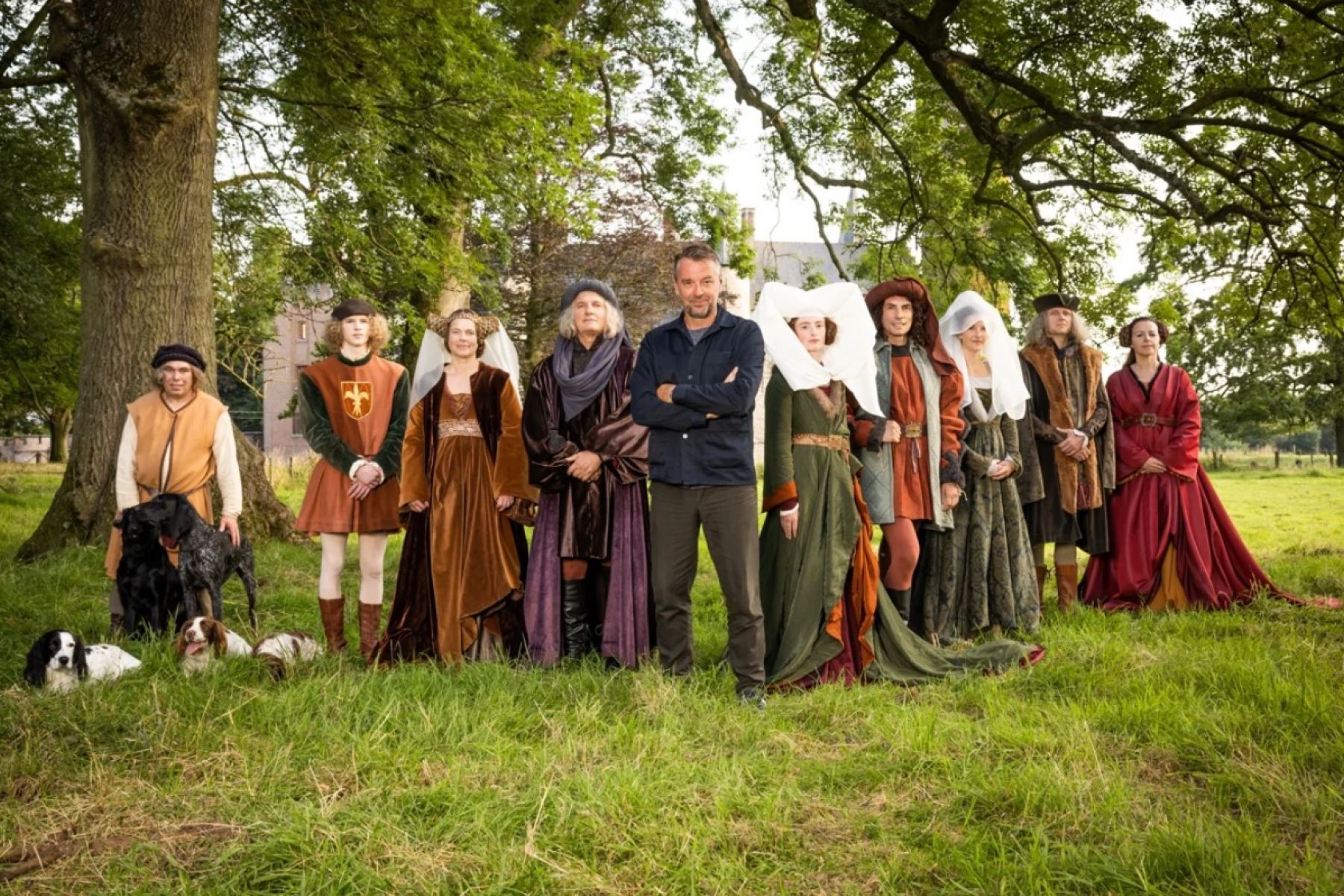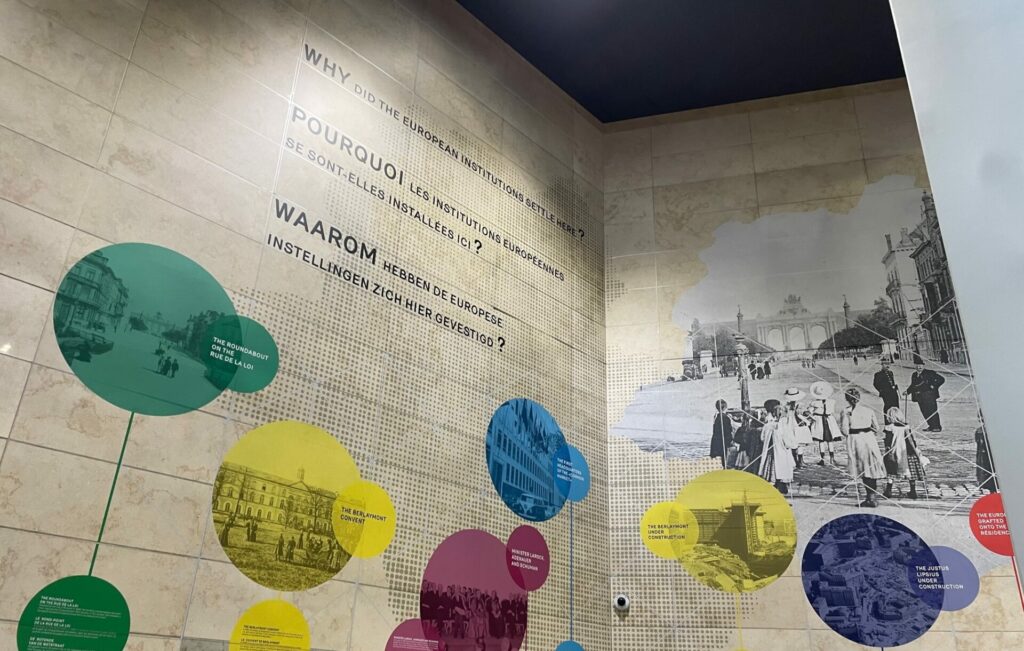Every Sunday night from 1 January to 5 March, around one million Flemings were glued to their television in order to watch the same series on the Flemish public channel VRT: “Het verhaal van Vlaanderen”. In ten episodes, this “story of Flanders” provided a selective overview, both entertaining and didactic, of what happened in the territory now called Flanders from Homo Sapiens’s earliest settlements to the end of the 20th century.
While produced by a private media company, the series was quite lavishly funded by the Flemish government, in which the Flemish-nationalist party N-VA plays a dominant role. In its programme for the present legislature, this government had made an emphatic and unprecedented use of the term “Flemish nation” and announced that it would take various initiatives in order to strengthen Flemish identity.
One of them is the elaboration of an official “Flemish Canon”, due to be made public in May 2023: “a set of people, events and cultural heritage that, taken together, reveals the story of the historical and cultural development of Flanders as a European nation”. Consequently, some hoped, while others feared, that the TV series would amount to the sort of reconstruction of the past that would show that the “Flemish nation” had been there all along and that Flemings could be proud of their ancestors.
This was not at all what the series turned out to be. For example, there was a passage devoted to the Roman conquest, epitomized by a sentence from Caesar’s De Bello Gallico which Belgian pupils used to have to learn by heart: “Horum omnium fortissimi sunt Belgae” [Of all those, the Belgians were the most courageous]. That passage was not used to explain that by “Belgae”, Caesar really meant the Flemings, but rather to contextualize a genocide: it explained how, enraged by the Eburon’s resistance, the Roman legions exterminated Ambiorix’s tribe up to the last child.
Similarly, the 1302 “battle of the golden spurs”, commemorated on the 11th of July by Flanders’ national day, was not presented as a flamboyant victory of the Flemings against the French, but rather as an ephemeral victory of the working class against the nobility.
One might at least have expected the tenth and last episode (1939-1999) to say something about Flanders acquiring the status of a political entity. Not a word. Instead, the focus was on the rise of the consumer society, the impact of the contraceptive pill and above all immigration: whether invited by the Belgian government or by private employers, foreign workers came to do the jobs Flemings would not do.
Soon they were joined by their families and moved into city centres that car-owning “autochtones” had abandoned. Superdiversity, the series concluded, is Flanders’ irreversible fate.
This is a long way from “the story of the historical and cultural development of Flanders as a European nation” which the Flemish government might have hoped to get. What is positive and reassuring about this distance is that it shows that the generous funding did not interfere with the autonomy of the journalists or the integrity of the historians involved.
But should the distance not have been somewhat smaller? Once a territorially defined community is given significant political powers, it is no doubt salutary that its citizens should be given the historical knowledge that enables them to make more sense of the vestiges of a more or less remote past that surround them, from street names to industrial ruins. But it is just as important for them to understand how and why history turned them into a political community.
In the case of Flanders, this would include an account of the oppression of Flanders’ population by a Francophone bourgeoisie and state apparatus in the 19th century, the struggle for the gradual replacement of French by Dutch at all levels of education, the expulsion of my university (the Francophone UCLouvain) from the Flemish city of Leuven in 1968, the creation of the Flemish region in 1979, and the official transformation of Belgium into a federal state in 1994.
Inserting some of this in “Het verhaal van Vlaanderen” would legitimately have made the series and especially its final episode a bit more “the story of Flanders”, rather than just an overview of some of the things that took place in the territory that is now the Flemish region and that barely differ from what happened elsewhere in Western Europe.
Needless to say, what Flanders can legitimately do, the other components of our federal state can also legitimately do. As democratic communities with significant powers, the Walloon and Brussels regions should also endeavour to strengthen their respective identities by recovering and disseminating both the multi-secular history of their territories and the more recent history of how they became what they are today.
There is nothing problematic, let alone obnoxious, about such an enterprise, providing it steers clear of exclusive nationalism: our “peoples” should be conceived as both multi-layered (Belgium and the EU are also our political communities) and inclusive (many of us were born elsewhere).
What form could this enterprise take where Brusssels is concerned? An expensive TV series is of course not the only option. Within their limits, documentaries such a Luc Jabon’s Bruxelles-Brussel, une traversée urbaine can contribute. As can museums that have a historical dimension, such as the Museum of the City of Brussels (on the Grand-Place) or Foyer’s Migration Museum (in Molenbeek).
So can also historical notices next to public monuments, especially those that cause some embarrassment, such as the cathedral’s 16th century stained glass windows celebrating a pogrom or the statue of openly xenophobic mayor Roger Nols in Schaarbeek’s town hall.
Unavoidably, Brussels’ European destiny would need to be given a key role. In 2003, the residents’ committee in Brussels’ European Quarter suggested that the European Commission display a history of the neighbourhood since the middle ages on the glass fence surrounding the Schuman side of the newly renovated Berlaymont building. Permission was granted for a period of eight months. Twenty years later, it is still there.
Encouraged by this experience, Brussels’s public transport company STIB agreed in 2018 to host and fund a huge “frieze” in Schuman metro station. It explains how a combination of chance and necessity gradually turned Brussels into the unchallenged political capital of the European Union and turned the Schuman neighbourhood into its “European quarter”.
Such reconstructions need to respect carefully established historical truth. But they can and must also select ruthlessly among the trillions of events that make up a territory’s past in order to help citizens make better sense of the present and build together a better future. Het Verhaal van Vlaanderen did some of that for Flanders. It could have done more. In a wide variety of ways, we Brusselers must keep doing that for Brussels too.


